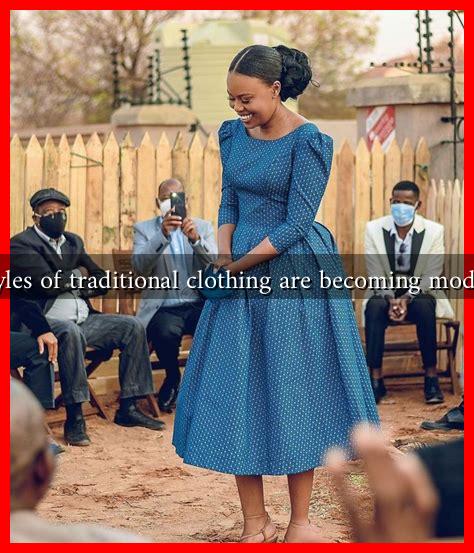-
Table of Contents
What Styles of Traditional Clothing Are Becoming Modernized?
Traditional clothing serves as a cultural emblem, reflecting the history, values, and identity of a community. However, as globalization and modern fashion trends continue to influence societies, many traditional garments are undergoing a transformation. This article explores various styles of traditional clothing that are being modernized, highlighting the reasons behind this evolution and the impact it has on cultural identity.
The Influence of Globalization on Traditional Attire
Globalization has led to increased cultural exchange, allowing traditional clothing to be reinterpreted and integrated into contemporary fashion. This phenomenon is evident in various regions around the world, where traditional garments are being adapted for modern wear. Some key factors driving this change include:
- Fashion Innovation: Designers are experimenting with traditional fabrics and patterns, creating hybrid styles that appeal to younger generations.
- Social Media: Platforms like Instagram and TikTok have made it easier for traditional clothing to gain visibility, inspiring new trends.
- Consumer Demand: There is a growing interest in sustainable and ethically produced fashion, leading to a revival of traditional craftsmanship.
Examples of Modernized Traditional Clothing
Several traditional clothing styles have successfully transitioned into modern fashion. Here are some notable examples:
1. Kimono in Japan
The kimono, a symbol of Japanese culture, has seen a resurgence in popularity, particularly among younger generations. Designers are reimagining the kimono by:
- Incorporating contemporary fabrics and cuts.
- Creating kimono-inspired jackets and dresses that can be worn casually.
- Using bold colors and patterns to appeal to modern aesthetics.
Fashion shows and events like Tokyo Fashion Week have showcased these innovative designs, bridging the gap between tradition and modernity.
2. Sari in India
The sari, a traditional garment worn by women in India, is being modernized through various means:
- Designers are experimenting with draping styles, making it easier to wear for everyday occasions.
- Contemporary fabrics and prints are being used to create fusion wear, combining traditional elements with modern silhouettes.
- Social media influencers are promoting the sari as a versatile outfit for various events, from casual outings to formal gatherings.
According to a report by the Indian Fashion Industry, the market for ethnic wear is expected to grow significantly, driven by the modernization of traditional garments.
3. Huipil in Mexico
The huipil, a traditional Mexican garment, is being embraced by modern fashion designers who are:
- Incorporating huipil designs into contemporary clothing lines.
- Promoting the use of traditional weaving techniques in modern apparel.
- Highlighting the cultural significance of the huipil through storytelling in fashion campaigns.
Brands like Mexican Fashion are leading the charge in this movement, showcasing the beauty of traditional craftsmanship in a modern context.
The Impact of Modernization on Cultural Identity
While the modernization of traditional clothing can promote cultural pride and awareness, it also raises questions about authenticity and cultural appropriation. The balance between honoring tradition and embracing change is crucial. Here are some considerations:
- Preservation of Craftsmanship: Modernization can help preserve traditional techniques by introducing them to new audiences.
- Commercialization vs. Authenticity: There is a risk that commercialization may dilute the cultural significance of traditional garments.
- Empowerment of Artisans: Modernized traditional clothing can provide economic opportunities for artisans and local communities.
Conclusion
The modernization of traditional clothing is a fascinating intersection of culture, fashion, and identity. As styles like the kimono, sari, and huipil evolve, they not only adapt to contemporary tastes but also serve as a reminder of their rich heritage. This transformation highlights the importance of balancing innovation with respect for tradition, ensuring that cultural identities remain vibrant in an ever-changing world. As we continue to embrace these modernized styles, it is essential to celebrate their origins and the artisans who keep these traditions alive.


